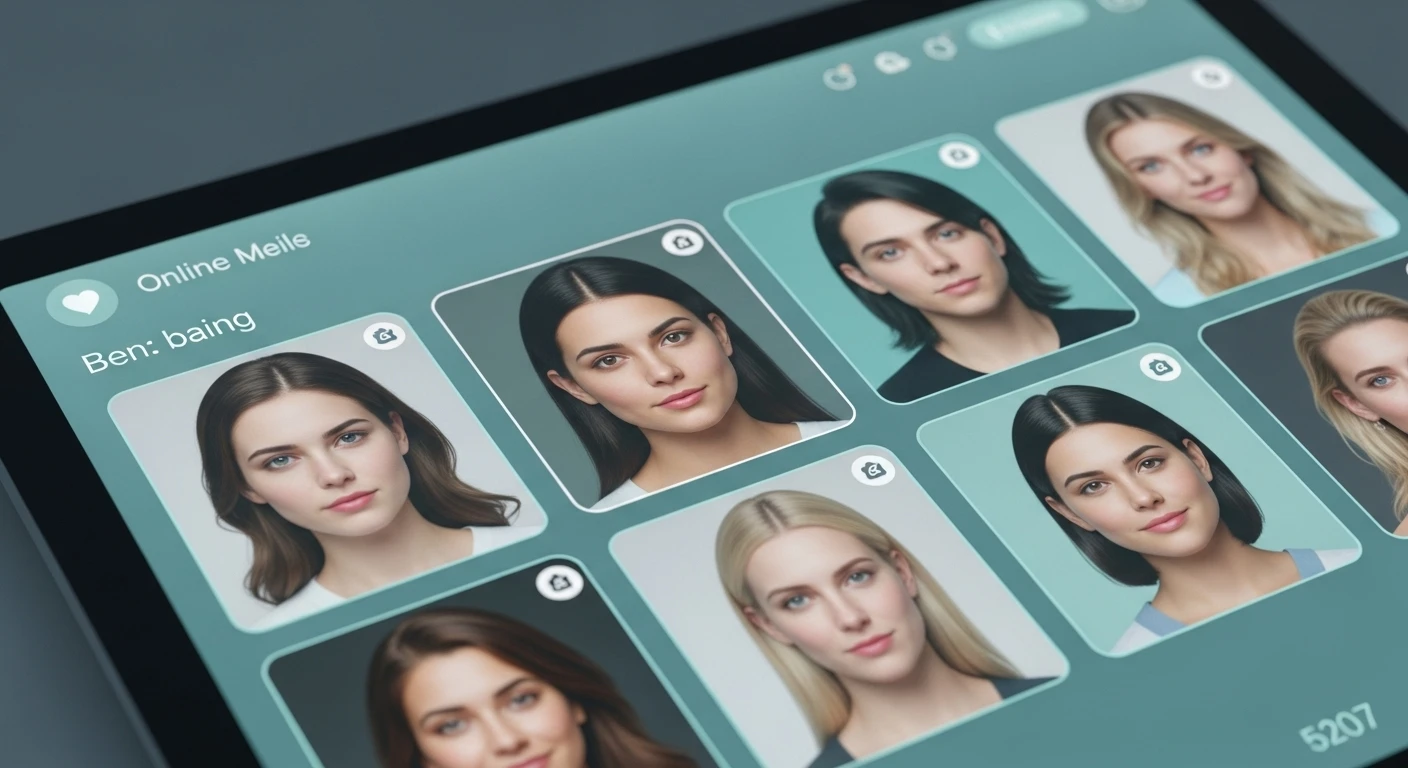Fighting Fake Profiles in Online Dating
Sep 8, 2025
- Team VAARHAFT

(AI generated)
Online dating has grown into one of the most widely used digital industries, connecting millions of people across the world. Yet with growth comes risk. Fake profiles powered by AI-generated photos, stolen social media images, and manipulated pictures are increasingly common. This not only undermines trust between users but also creates significant safety concerns. Dating platforms must adopt solutions that detect fraudulent images and restore confidence in their services.
Fraud risks that undermine online dating trust
Fake profiles are one of the biggest threats to online dating. With generative AI tools, anyone can now create realistic but entirely synthetic faces. These images often look perfect at first sight, showing smooth skin and symmetrical features that are less common in natural photos. Dating platforms face the challenge of distinguishing genuine profiles from AI-generated personas. A deeper exploration of this can be found in How Dating Apps Detect AI-Generated Profile Pictures and Crush Romance Scams.
Another widespread problem is the theft and reuse of existing images. Fraudsters copy pictures from social media or other dating platforms to create fake profiles. Victims often discover their photos circulating in multiple profiles without consent. For platforms, this raises major trust and safety concerns. Reverse image search is a powerful tool to identify such cases. More on this topic is available in Reverse Image Intelligence: Stopping Fake Dating Profiles with Cross-Platform Photo Checks.
The impact of these fraudulent behaviors goes far beyond inconvenience. Fake profiles are often the entry point for romance scams, sextortion, and identity fraud. For users, this can lead to emotional harm or financial losses. For platforms, it means reputational risk and potential regulatory consequences. These issues are discussed further in Building Trust and Safety in Online Dating: How Verified Profiles Beat Scams.
Integrating authenticity checks into dating workflows
Platforms can fight fake profiles by embedding authenticity verification directly into the account creation and moderation process. The most effective approach is layered, combining automated checks with selective live verification.
The Fraud Scanner provides automated analysis at the photo upload stage. It detects AI-generated and manipulated images, performs duplicate and near-duplicate checks, and evaluates metadata. Suspicious profiles can be flagged instantly, allowing moderators to focus only on high-risk cases. Reverse image search strengthens this process by scanning for identical or similar images already published online. This is key to preventing fraudsters from recycling stolen photos across different accounts or platforms.
SafeCam complements these checks with live verification. When risk signals are detected, the platform can ask the user to capture a real-time photo via SafeCam. The app ensures that only genuine three-dimensional scenes are accepted, blocking attempts to photograph a screen or printed image.
By implementing checks at these points, dating platforms reduce the chance of fake accounts slipping through, without creating unnecessary friction for genuine users.
The role of trust and compliance in user safety
Trust is the foundation of online dating. If users cannot believe that profiles are authentic, they will stop engaging. Platforms that fail to address fake profiles risk losing members to competitors and damaging their reputation. On the other hand, platforms that invest in authenticity tools strengthen loyalty and position themselves as safer spaces for connections.
Compliance also plays a growing role. Data protection laws such as GDPR require platforms to handle sensitive user information securely. Future regulations like the EU AI Act are likely to set stricter standards for platforms where generative AI fraud is a known risk. VAARHAFT’s solutions are fully GDPR-compliant, processing images in Europe and deleting them after analysis. This ensures that fraud prevention aligns with regulatory requirements.
Safety concerns extend beyond compliance. Fake profiles are often linked to romance scams and financial exploitation. Platforms must act not only to protect their brand but also to safeguard users from harm. Preventing fraud at scale is both a moral obligation and a strategic necessity.
How authenticity layers build safer dating platforms
A resilient dating platform integrates authenticity at every step of the user journey. Fraud Scanner screens all profile photos during upload, flagging fakes and manipulated images. SafeCam ensures real-time verification when elevated risk is detected, giving an additional safeguard against fraudulent users.
This layered model reduces false positives and improves user experience, as genuine users can sign up quickly while fraudulent actors are filtered out. Structured reports provide clear evidence for moderators and can be used in audits, strengthening compliance and transparency.
Looking ahead
Fake profile detection is one of the most urgent challenges for online dating platforms. AI-generated images, stolen photos, and manipulated files threaten trust and safety. Traditional moderation and manual checks are no longer enough to deal with modern fraud.
Platforms that integrate authenticity as a core part of their workflow not only protect users but also secure their long-term growth. In a competitive market, user trust is the strongest differentiator. Investing in authenticity is therefore investing in the future of online dating. To See hoe our solutions can secure your platform’s workflows, schedule a live demo with our experts here.
.png)